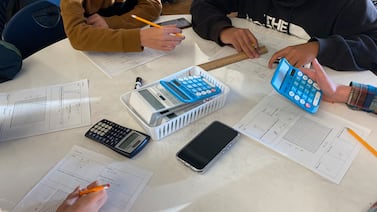Students in Michigan’s lowest performing schools have made gains in elementary math and English since they joined a state turnaround program, according to a new report.
Researchers at Michigan State University said policymakers should stay the course with the Partnership Model, which is designed to help struggling schools better serve students.
The success of the program is critically important for thousands of students of color in Michigan, who are disproportionately likely to attend low-performing partnership schools. It also adds new evidence to a national debate about whether — and how — struggling schools can improve student learning.
The early signs of improvement offer a ray of hope that the partnership schools will be able to help students catch up after months away from classrooms. The number of people who contracted COVID-19 in April was five times higher in the areas served by partnership districts than in other districts statewide.
The program promised guidance, training, and extra funding to schools with the lowest test scores in the state. Beginning in 2017, 123 schools in 36 districts were identified for the program and were required to meet improvement targets within three years.
Academic progress at the schools was uneven. On the whole, though, the positive statistical effects of the program on student test scores was better than other turnaround programs that have been evaluated using similar methods, such as Tennessee’s state-run Achievement School District schools, the researchers said.
Notably, students in partnership schools did better than their peers in schools that shut down. That’s especially significant in a state with a history of actively closing struggling schools or simply allowing them to fail.
Key findings about the program from the 262-page report include:
- Partnership schools saw significant, if uneven, academic improvements in math and English scores for students in grades 3-8.
- Graduation and drop-out rates were not significantly affected, and SAT scores at participating high schools were largely unaffected.
- A school improvement method provided to schools leaders was useful, according to surveys with school staff.
- Attracting and retaining effective teachers was a major challenge.
- Teachers and principals at charter schools were more likely to support improvement efforts and to be knowledgeable about the program than their peers at traditional public schools.
- Additional funds provided to partnership schools were helpful, but a “drop in the bucket,” according to several school leaders.
The Partnership Model of school turnaround was introduced by late State Superintendent Brian Whiston after the state botched attempts to close struggling schools. Researchers compared test score data from partnership schools with data from students across the state. They also surveyed teachers and principals in partnership districts and conducted case studies of three districts.
The stakes of the school improvement efforts are especially high for students of color. The Partnership Model schools reflect the racial inequities of Michigan’s education system: Roughly one-third of all Black students in Michigan are enrolled in low-performing partnership districts, compared with just 2.4% of white students.
Taken together, the early outcomes of the partnership program mean the state should stick with the program, researchers wrote.
“School and district reform take time, and a growing literature suggests a need to continue supporting low-performing schools and districts over multiple years,” the report says.





